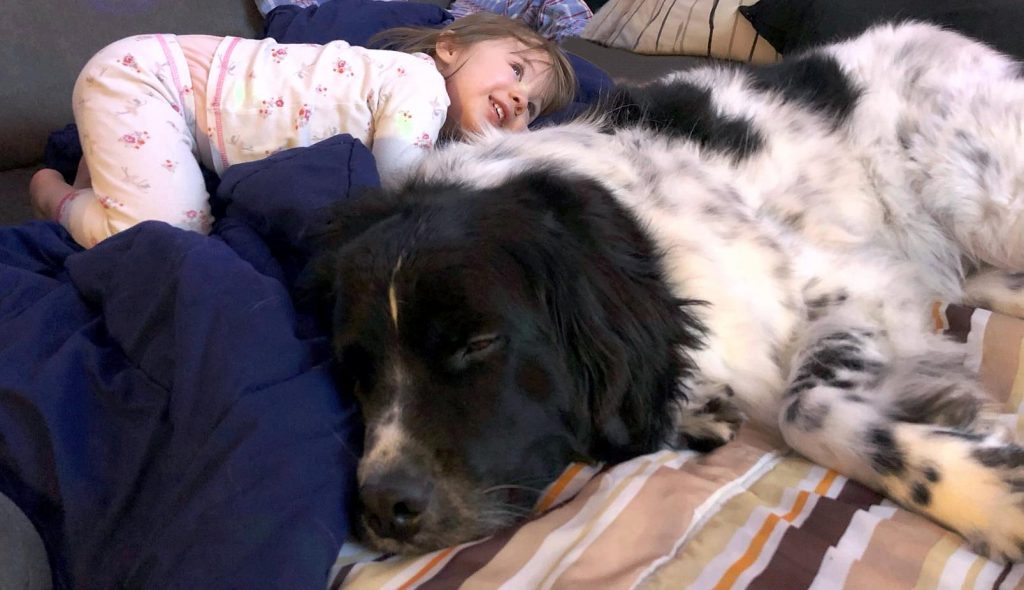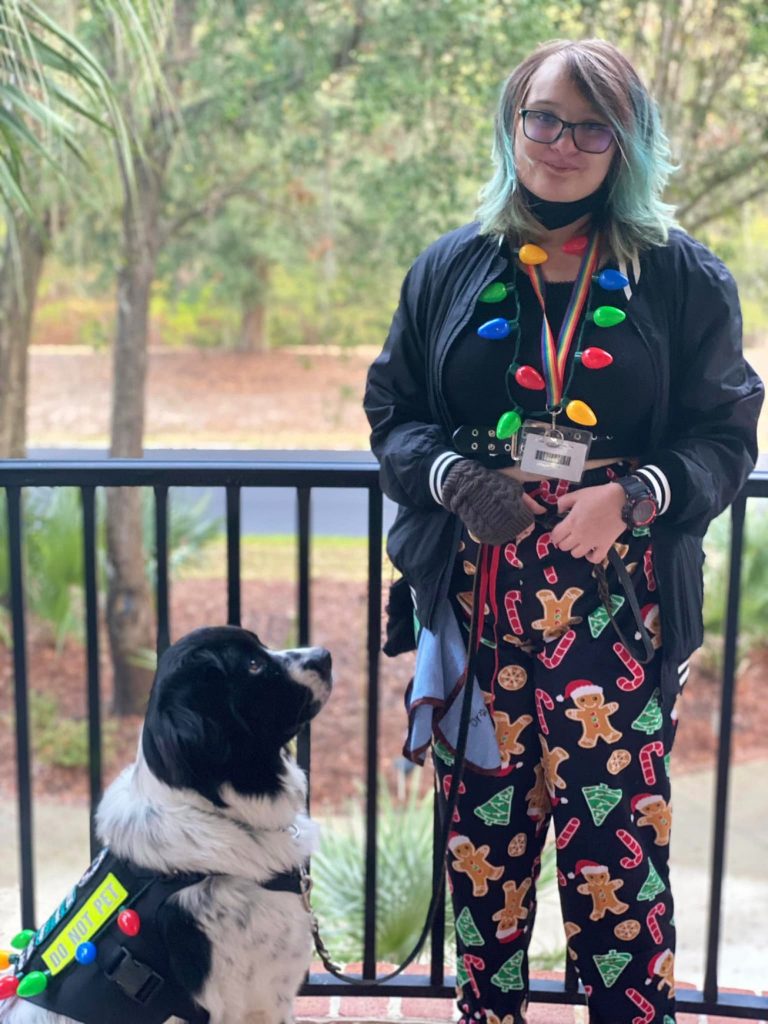How long your anchoring service dog will be able to perform its task.
A common question we hear is, “how long will my service dog be able to anchor my child before I have to retire it?” As most people are aware, the giant breed dogs that we work with don’t live as long as their smaller canine counterparts. This is true of all the giant breeds, including Great Danes and Bull Mastiffs. Longevity is one of the considerations we prioritize when working with our breeders, and some of our breeders have had their large dogs live to be 13 years or longer. However, that isn’t the average. Most of the dogs we work with have a general lifespan of 9-11 years, depending on your source of information.

For most service dogs, retirement generally occurs around 9 years of age. As many of our dogs are around 2-3 years old when placed with their family, this provides a realistic service life of between 5-7 years. If the family is diligent, pays attention to health considerations and takes steps to minimize joint impacts over time (i.e. loading and unloading the dog into the car using a ramp, maintaining a proper work weight, being consistent about giving joint supplements, etc.), the service life of the dog can reach its full potential. We cover many of these topics during Team Training.
What previous service dog teams have experienced is that the initial anchoring behavior is employed readily in the relationship early on, but the child’s elopement behavior tends to become less frequent as time goes by. The child becomes accustomed to not being able to run beyond the length of the tether. Staying close to the anchoring service dog and the adult team members becomes naturally more rewarding for the child, and habit-forming. The overall effect is that the child’s wandering behavior decreases significantly over time.

By shifting the emphasis away from the anchoring behavior, the dog naturally becomes more of a transitional liaison for the team and the social-interpersonal aspect comes to the forefront. These host of secondary benefits are every bit as important as the safety net the anchoring behavior initially provides. The service dog’s role doesn’t diminish – it simply changes with time.

Anchoring dog teams in the field have found that the dog gradually transitions into more of a companion for your child, rather than a guardian for their safety. This transition is a natural progression of their relationship and can last until your service dog retires. It’s our hope the dog will remain an important member of your family, even after it retires. However, we understand that ‘life happens’ and this may not be the case. For us here at AAD, all of our dogs will always be taken care of, regardless of life circumstances. If necessary, we will take the dog back and either provide it a good home ourselves or find a good home for it to live out the rest of its life. It’s part of our continued commitment to all of our dogs. For every family that we’ve placed a dog with, we are just a text or phone call away and will be happy to help you plan for your service dog’s retirement when the time comes.